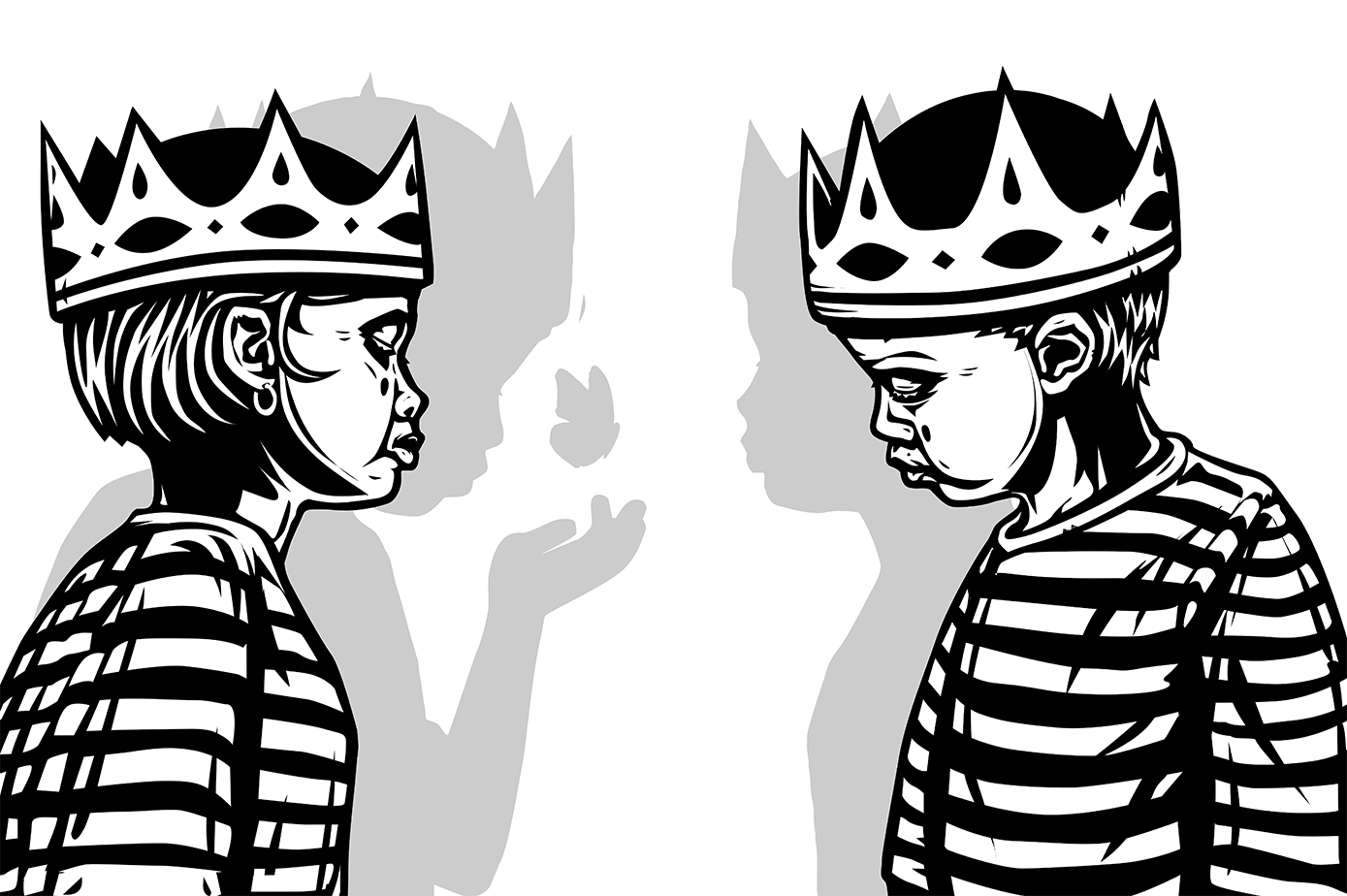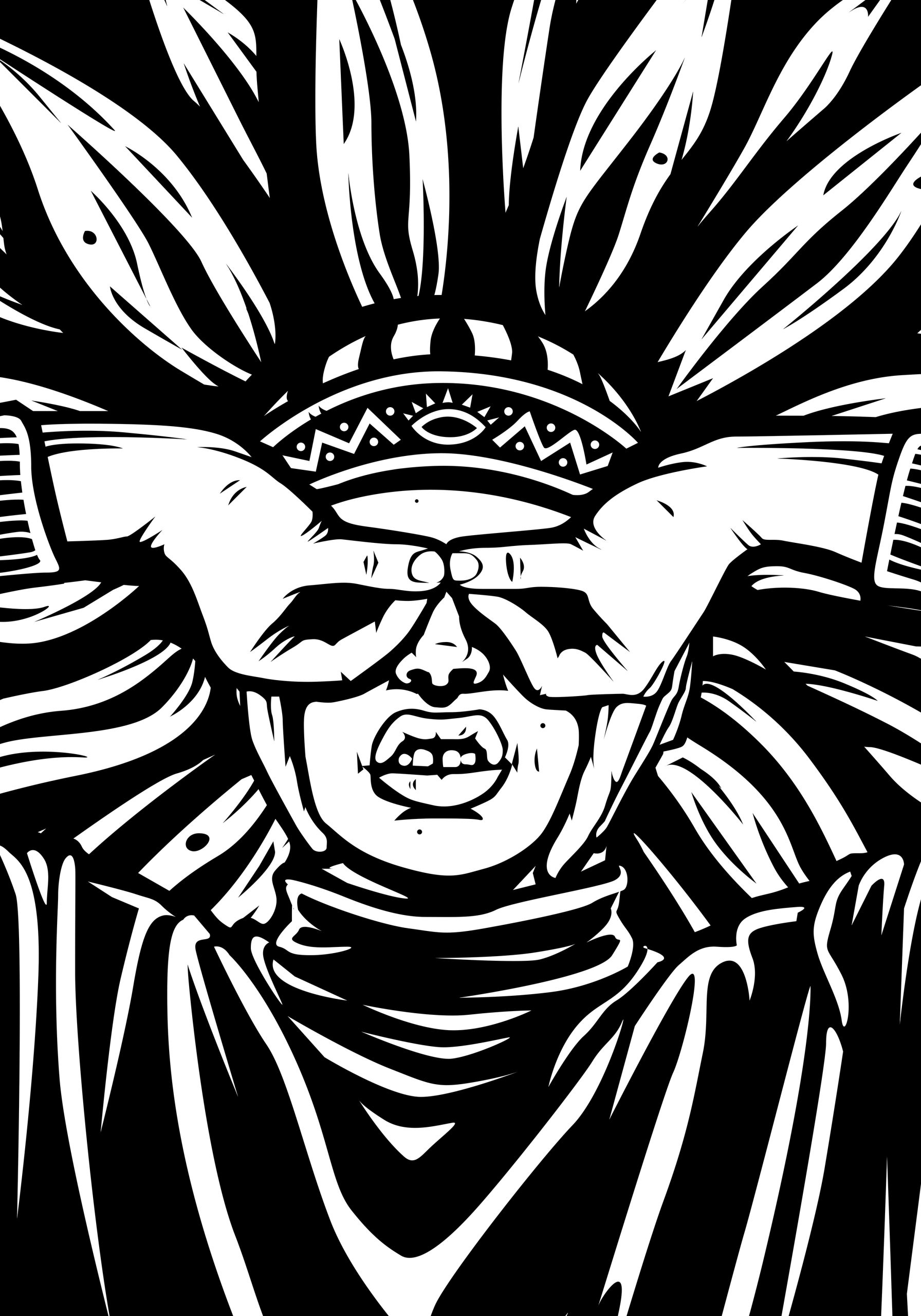He came down, lowered by a crane, and signed off as pill-popping Nir Peled, aka PILPELED, descending from the eye of his five-story mural, chewing the stub of his rolled cigarette, a jovial bear of a young man grinning from ear to ear.
After due exposure throughout Europe, the US and his native Tel Aviv, it was the welcome Turkey debut for PILELED, and he felt right at home in the Kadıköy, Yeldeğirmeni of Istanbul’s lower-key, Anatolian sanctuary for foreigners, artists and folk of all stripes and means.
Black Flag Gallery is a fresh outfit run by tattoo artist Emre Tuzla and partner Caner Savaş, together with the latter’s wife, Simge. They started under a bad sign this March, and after a successful group show, PILPELED is their first time hosting a solo exhibition.
The neighborhood of Yeldeğirmeni is off-center from the core of Istanbul’s art world institutions, based mainly in Beyoğlu, but in recent years, it has bubbled with creative, entrepreneurial energy as youth culture and nightlife has gone into self-imposed exiled following the ongoing political malaise in Taksim, to more open, freer spaces in Kadıköy, or Asia as some might identify it (noting its spectacular contrasts from the city’s European side).
That’s where PILPELED comes in. It’s a rarity for Israeli artists to appear on the arts scene in Turkey, despite the two country’s sharing the Eastern Mediterranean and histories of secular Middle Eastern cultural fusions. Black Flag operated independent from the municipality of Kadıköy in their collaboration with PILPELED, specifically producing his mural in Yeldeğirmeni with local street artists, such as Reach Geblo, Yusuf Aygeç, and Furkan “Nuka” Birgün.
Around the corner from his signature black-and-white child portraiture, Black Flag is exhibiting over 30 original works, all made within the year for the show, out of ceramic, carpet, painting on wood and digital illustration prints reminiscent of Keith Haring’s op-art sensuality.
As the androgynous kid of some lost, ancient ethnicity, be it a Hittite, or Moabite, or what sociological complex is inconceivable to the modern mind, PILPELED has a peculiar way of bringing out white like the blank slate of the imagination, even beyond the visual, against the utter definition and depth of blackness.
With the Hebrew letter, for “P” (פּ), after PILPELED, affixed to the third-eye of the enlarged mural of the exotic youth, its rusty ruddy brown matches the background of the residential building itself. The appearance of children alone has an ameliorating effect, one that made neighbors and colleagues blissful by the sight alone.
The graffiti aesthetic of PILPELED arguably has a likeness to the Istanbul-based Kurdish artist Hasan Pehelvan who also started as a street artist in Diyarbakir and went into the gallery world by showing the salvaged wall fragments of his optically-entrancing works before and after tagging demolished buildings in Istanbul’s lesser-known, high-rise districts.
For art world snobs who might furl their brows at the thought of a street graffitist entering Istanbul’s commercial gallery world and calling itself “art”, shouting for attention from across the Bosphorus, PILPELED has a few convincing tricks up his sleeve.
Black Flag showed PILPELED’s portrait series of eight prints similar to that portrayed on the outdoor mural. In each, the children, apparently based on the artist’s encounters with real, amiable youngsters, ring their fingers around their eyes. Replacing those windows to the soul with opaque black holes makes for a curious resonance, anonymizing the figures somehow, without such physical identifiers. Eyeless, a human being gains a mythic, poetic poise.
One child has a feather in their hair, and braids like that of the Native American princesses of archetypal history. Weaving her hair with his characteristic black-and-white lines that wave and flow like liquid, still in motion, the smiling kid wears a bracelet expressing a personal sentiment of PILPELED, as a supporter of cannabis use, and a devoted smoker himself.
Adorned with elegant, tropical headdresses, some with psychedelic headbands others squinting under pilot goggles, PILPELED forwards a fun-loving, festival vibe. He is less comfortable showing his works indoors in a gallery than he is outside, where the music blasts and the smoke whirls, curling up into the cloudless night. He is foremost a street artist.
But as Black Flag has prompted, his works are more subtle and carefully conceived than might be gleaned from passersby and the extra-critical environment of the street, where thoughts and ideas clash with the sound of construction, the honking of horns and the loss of freewheeling, truly public social interaction, particularly during the pandemic.
Often cryptic, as derived from his special adaptation of paleo-Hebrew alphabet, he leaves a trail of signs, akin to the visual language of graffiti, but more introspective. For example, pieces like “Meringue” or “Kiss the sky” are delicate optical artworks that demand close, and patient eyes to tease out every seductive devil in its mesmerizing degree of emotive, moving detail.
And works like, “Nutella” or “It’s never will be our song” are nakedly pro-sex, passionate and erotic depictions of love in the making. Together with his wood painting, “Kud Katan”, there are esoteric allusions to the kind of visionary, spiritual art that Alex Grey has fired into collective consciousness for the younger, global generation like that out of which PILPELED has emerged to celebrate and integrate into their oeuvres as part of a new art historical embarkation.
Yet, while PILPELED is adamantly apolitical, and irreligious, he has not departed entirely from broader narratives of art history, and in fact, dialogues with its popular mysteries in his latest series of works for Black Flag. Two of his works are titled, “da Vinci”, one of which refers to the unmistakable “Lady with an Ermine”. He blows away the cobwebs around the young woman holding her mystifying mammalian creature with his geometric wizardry.
Lastly, the piece, “Turkish Movie” depicts a dramatic, romantic, arabesque scene between classic Turkish actors, like Sadri Alışık and Filiz Akın, open-mouthed, their hair in the wind, blooming with a bouquet of arabesque drama. It is a direct dedication from PILPELED to the people on the ground in Turkey, toward an evergreen source of Turkish-Israeli art production, between Anatolia and the Levant, led by artists whose eyes are on the street in a time when life indoors has never been less appealing.











